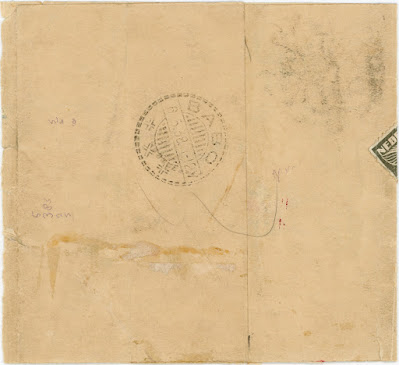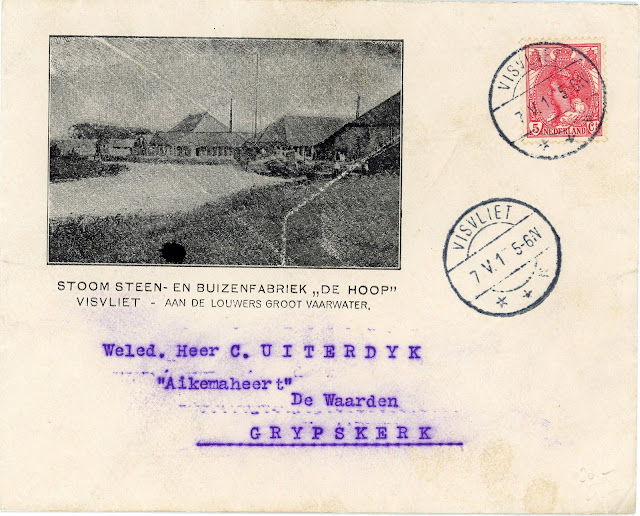 |
| Newspaper wrapper sent from Delft 17-1-1938 via Pladjoe and Babo to Port Swettenham via Singapore (4-6-1938) |
The newspaper wrapper shown above made a very lengthy detour while trying to reach Mr G. Klem of the British Petroleum Company. Apparently he was thought to have been on board the M.S. Augustina - a ship of the N.I.T. Company (Nederlandsche Indische Tank Stoomboot Maatschappij - DEI Tank steaming company-) in Pladjoe when the wrapper was sent in January 1938. It arrived in Pladjoe in March (date cancel reads 7-3 I think).
 |
| Possibly the M.S. Augustina with oil pipes in Babo harbour |
Mr. Klem was not found in Pladjoe and now the mystery starts. The address was crossed out with blue crayon - a different address in Singapore (Marine department) was added in the same blue crayon. So my best guess would be that the wrapper was redirected to Singapore first. There, in red ink a different address c/o N.N.G. Petr. Mij (Netherlands New Guinea Petroleum Company) was added although it's strange that the handwriting of this red ink is suspiciously Dutch in style...
 |
| Reverse of the wrapper with Babo date cancel 6-5-1938 |
In Babo a label was applied with address c/o messr. Asiatic Petroleum Company "Shell House" in Singapore. So it was forwarded to Singapore once again (date stamp 4-6-1938). There the company realised that Mr Klem was stationed at Port Swettenham in Malayasia so a second label was applied. I think that it finally reached Mr Klem there.
This is my best guess, but I'm not sure if I'm right at all. Of course the date stamps helped me a bit but I'm still at loss with the more purplish red crayon (cannot decipher it) and the fact that there was no transit postmark applied when the wrapper arrived in Singapore for the first time (somewhere in April I guess).
Please help me if you think you've solved the puzzle!
.tiff) |
| Pladjoe Refinery in Sumatra |



.tiff)






